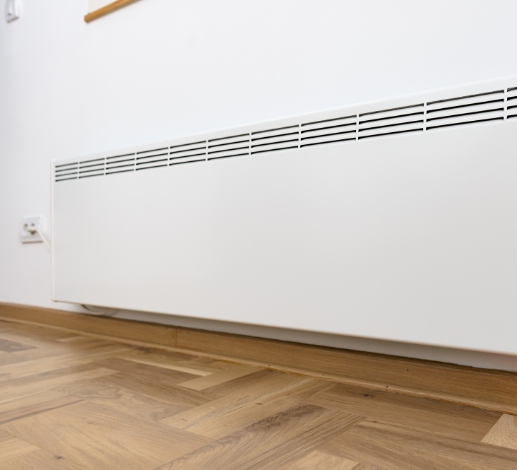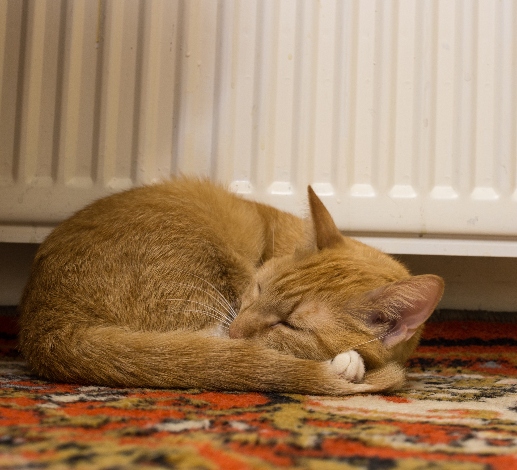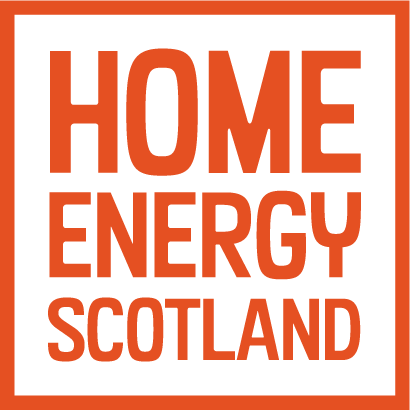How to save energy when you've got electric storage heaters
How to save energy when you've got electric storage heaters
Read our article to learn some of our top tips on how to save energy when you've got electric heating.

If you have electric heating, you might find it challenging to keep your home warm over winter and your energy costs affordable. Read our article to learn some of our top tips.
What are electric storage heaters?
Electric heating uses electricity and for most people means electric storage heaters, an electric boiler, or underfloor heating. Electric heating is more common in flats, rented properties, and in homes that aren’t connected to the gas network.
Electric storage heaters – which are the most common type of electric heating - generate and store heat when electricity is cheaper and release it during the day. They’re designed to work with electricity tariffs that supply cheaper electricity at certain times of the day, which is usually overnight but many people will have afternoon or evening periods of charge as well.
Check your meter and tariff
It’s important to make sure your heating system matches your meter type and tariff. You can arrange this with your energy supplier. For example, Total Heat with Total Control, Economy 7 and Comfort Plus are meters and tariffs that are designed to work with storage heating.
If your storage heaters use Total Heat with Total Control or Comfort Plus with Weathercall, your heating and hot water is likely controlled by a radio teleswitch signal which tells your storage heaters when to charge and when your hot water should switch on. The system that controls the radio teleswitch signals is due to close on Monday 30 June 2025. Your electricity supplier may have already been in touch asking you to change your meter. If you decide not to upgrade your meter, your heating and hot water provision could be affected. Read our article ‘The closure of radio teleswitching explained’ for more information.
We know that different meter types and tariffs can be confusing, but we can help you work out what option’s best – contact us and one of our advisors will be happy to help.
Get to know your heating controls
If you’ve got modern storage heaters, it’s likely you’ll have an automatic charge control, a thermostat and a programmer built into your heater. These controls work together to ensure that once the programme is set, the heater can control itself without you needing to make any adjustments, unless you want to change the programme. If you’re not sure how to use the controls, ask your installer to explain them to you. You can usually find explainer videos online too.
Older storage heaters use input and output dials to control heat. The higher you set the input, the more electricity it will use and heat up overnight. It can be helpful to look at the weather forecast. If it’s going to be cold, adjust the input to high so that the heater stores enough heat to last the next day. If it’s going to be mild, turn it down so that you don’t store more heat than you need.
The output dial controls the release of heat – the higher you set it, the quicker it will release the heat. If you set the output too high, it may run out of heat before the end of the day. Think about your daily routine and see if you can adjust it to suit this. For example, if you’re out during the day, leave it on minimum – you can adjust it when you get home to release more heat.
For both types of storage heater, remember that they need to charge the night before and that any changes to the input won’t happen until the next day.
Read Energy Saving Trust’s guide to electric storage heaters, which includes a guide to using electric heating controls, for more information.
Make the most of your off-peak hours
If you’re on a tariff where you pay less for electricity used during the night, you could save money by changing the way you use your household appliances. It’s worth checking with your energy supplier when these cheaper hours are because these can be different over summer and winter time.
We’re not suggesting you tackle your ironing in the middle of the night! But you could charge your phone, laptop or even your electric car during off-peak hours. And instead of running the dishwasher or washing machine after dinner, you could set it to switch on just before you get up in the morning.
And remember, if it’s time to replace any of your appliances, consider choosing a model with a high energy efficiency rating to save energy.
If you have a meter and tariff like Total Heat with Total Control or Comfort Plus with Weathercall, your heating is likely on its own circuit so only your heating will make use of the heat or control rate.
Consider your heating alternatives
If you’re not happy with your electric heating system, our advisors can discuss other heating options with you and help you work out what systems will suit your home and lifestyle. We’ll also let you know if any funding is available to help you cover the cost of a new heating system, including grants and loans funded by the Scottish Government. Contact us for free, impartial advice today.
Latest news and case studies
We have articles, blogs and case studies covering topics ranging from home energy tips to low carbon travel, and business advice to installing renewables.

Save energy while cooking this Christmas

Stay warm at home for less



